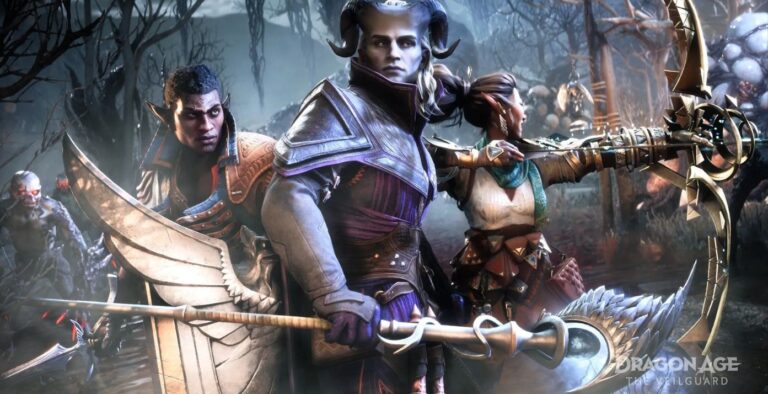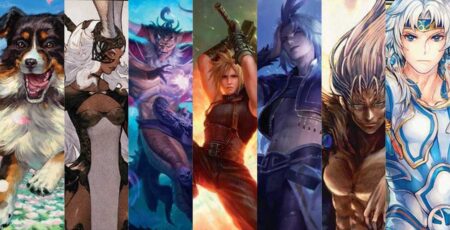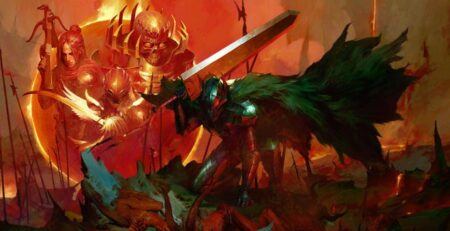As the fourth entry of the Dragon Age series approaches, excitement grows for the opportunity to visit Thedas once again. While some preferred exploring the sprawling Hinterlands or the Dwarven City of Orzammar, many fans of the EA published series have a favorite setting, whether it’s due to the architecture, the inhabitants, or even the stories told in those places. Dragon Age: The Veilguard, developer BioWare’s next entry, does away with the massively explorable zones from the previous game, but it exchanges breadth for density. Instead of a landscape dotted with landmarks, it packs them into semi-linear, controlled exploration, so you’ll find yourself stumbling across more breathtaking sights than ever before.
I recently had the opportunity to go hands-on with Dragon Age: The Veilguard, playing through some key moments and exploring a variety of new settings in the first act. Having witnessed this new design philosophy firsthand, I was then able to speak with the titles Art Director, Matt Rhodes, and the Missions and Level Design Director, Francois Chaput, about how the franchise’s history guided them.
With a firmly established aesthetic for the world of Thedas, creating new cities, landscapes, and even worlds can be a daunting task. The work from previous games could serve as a guide, helping steer your work in the future, but the same framework could also be seen as a restriction, limiting how ambitious or creative you can be. Fortunately for Dragon Age: The Veilguard, the two directors saw it as a positive.
“I feel like a kid in a candy shop. It’s the absolute dream project scenario to be on, where you have some really awesome framework like you have some boundaries set with the franchise[…] we’re going to actually get to articulate and bring to life these cultures that have only been hinted at.” Rhodes continued, “And one of the things that we love trying to do is – I want new players to be able to come in and say, ‘This is really neat, this is a beautiful world, it’s awesome,’ [for] but old players to be able to recognize the DNA, they’ll be able to tell ‘Oh this is so clearly where Dorian came from.’ That kind of thing where it’s like – to me if I start hearing that, that’s gonna mean we got it, we nailed it.”
Chaput added, “And for me, ‘kid in a candy shop’ is really the best way to summarize it. This IP is so rich, there’s so much history to it […] So I wouldn’t say it’s limiting at all, it’s almost free, the ideas are free, the inspirations are all there. Conversely to that, it also allows us to ask “Well, what have we not done?” That’s a little harder sometimes, but one example of that that you’ve seen in this demo is the Ossuary level. ‘What have we not done? We’ve not gone underwater.’ and ‘What else have we not done? We’ve not stopped ourselves from building the level’ So we just went for it and it was awesome, I’m really happy with how it turned out.”
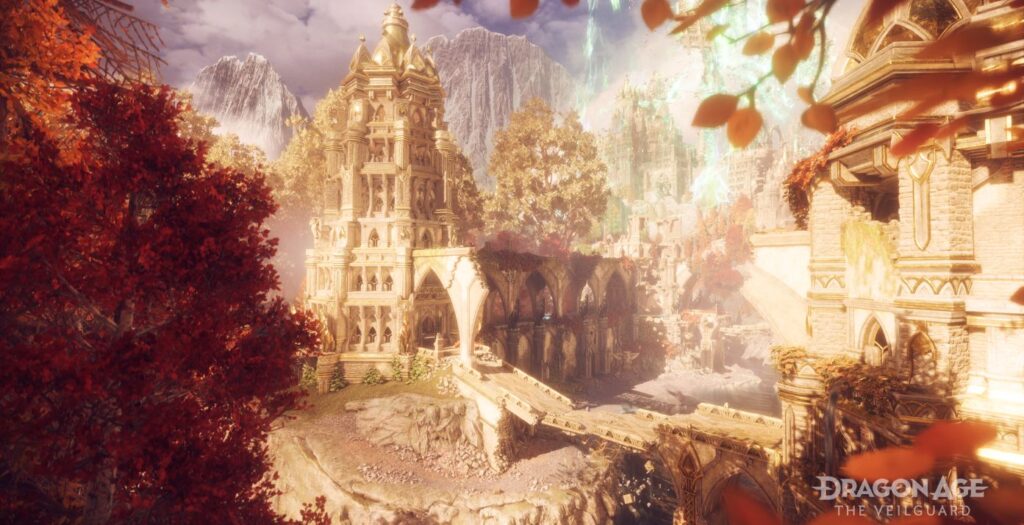
While the previously established factions and cities in Thedas gave the team a solid start, they had more freedom when dealing with groups that had only been hinted at. Cities like Treviso, which have only been referenced until now, are ripe for exploration and creative design, building off of whatever vague descriptions they’ve been given previously. With a deeper look into each of the factions, the team also collaborated heavily to create identities supported by shape language, color palette, and even lighting. This allowed them to build out each setting that felt unique but still fit into the world presented in Dragon Age: The Veilguard.
When asked about this diversity of settings, Rhodes credited it to collaboration. He explained, “One of the things we really looked at early on, more than ever before: collaboration between writing, art, design. All the teams that were trying to put this stuff together and establishing as early as possible, ‘What are the stories that would be really fun to tell if we have these opportunities.’ And I like to say, we looked at the different regions but also the different factions within the regions almost as their own genre[…] Even the language of lighting is something we changed up, like we light up different regions completely differently than each other just so it feels like it’s this swap as you’re going from world to world almost.”
The idea of assigning a genre to each faction isn’t new to the franchise. Mage quests in the past veered into the horror genre, with demonic invasion or influence presenting itself as the cost for such power. With Dragon Age: The Veilguard, however, it seems that this is a more deliberate decision, with factors like lighting affecting how players view and interact with the world and its stories.
Naturally, these factions need a strong identity in order to be compelling. A faction leader, interesting quests or even a moving philosophy can all affect a player, and successfully doing so can give more weight to their choices. Even if players find themselves aligning with one or two factions over the rest, some groups like the Mourn Watch can influence their perspective of the world or create interesting conversations with their companions.
Despite my familiarity with only two of the six factions offered in character creation, I wanted to know more about the directors’ favorite factions to design for. Chaput started, “The Grey Wardens have always been near and dear to my heart, but also part of the fantasy we were trying to fulfill with them was more of a horror fantasy. You know, they’re going to be facing things that are just horrific and part of the conflict they deal with is, this world is poison, it’s corrupted, there’s something going on here. But also, their past has some secrets too, some dark things to unearth that I don’t want to spoil but it really leaned into some things that I thought are really fun and inspiring to work with.”
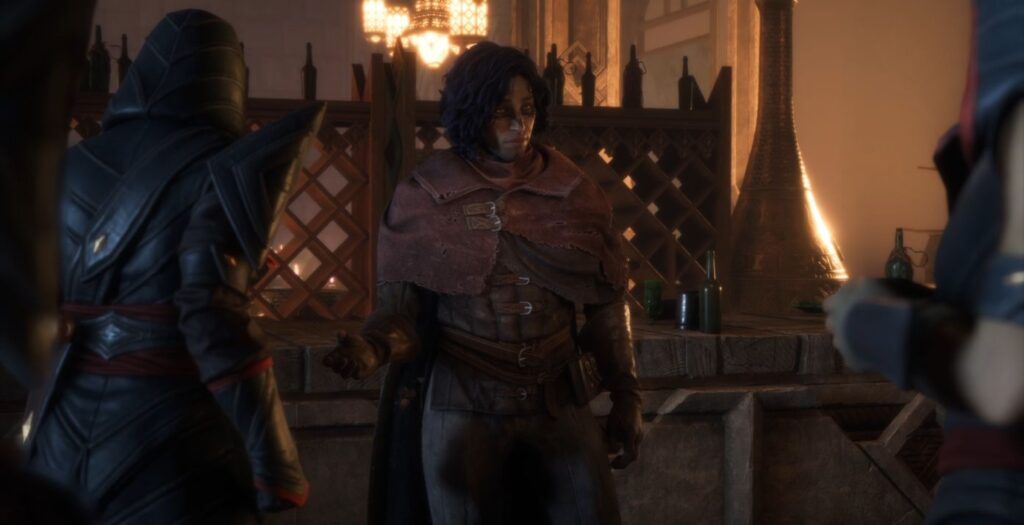
Rhodes focused on one of the newer factions introduced to the franchise, the Mourn Watch, “The faction that I had the most fun with was actually the Mourn Watch. […] It was really cool working with writing and design to figure this stuff out together, it’s like a mix of almost a more academic view of death, and there’s a scientific element. It’s like ritual, and science and magic all combined, there’s an elegance to it that kind of emerged naturally from that process that I found really surprising.”
Chaput added, “[…] The thing I really like you’ve done with the Mourn Watch and that everybody’s done. These aren’t necromancers who are there just to exploit the dead and to use them or weaponize them. They actually celebrate the dead, and they kind of – as ironic or contradictory as it might sound – they live death. It’s really part of their culture.”
Rhodes concluded, “Early on there was some concept art that someone did that was a little overly enthusiastic in like the gore, the nightmare of necromancy. Thorns and eyeballs, it was very gruesome and visceral and we realized, we had already started to figure out these guys respect death. They have a love and an admiration for anatomy, they’re as much doctors and anatomists as they are death mages. So it was cool that as that identity solidified we were able to say ‘Yeah more of this, less of this.’”
The influence of the factions on the rest of the world feels built into the core of Dragon Age: The Veilguard. Even in the past entries it was easy to differentiate between Dwarven architecture and Human or Elven settlements. This time around there were more than a handful of gorgeous settings to explore in my limited time with the game, which made me wonder which existed first: the setting or the story that leads to it?
On the subject, Rhodes said, “That’s a really good question. One of the things that’s been really fun is that on this project, we storyboarded it early, and we made that storyboard visible. So that more of the team had more visibility into what the whole game actually was, way further than ever before. This meant people could collaborate. Everyone could kind of play along and improvise, and then with improvisation, we had moments like – you saw the archon’s palace floating above Minrathous. That was just a drawing one of our artists did and we were like ‘Well we’re doing that.’ […] That spirit of improv and collaboration, where we just say ‘yes and’ each other continuously, and everyone gets it. Audio can do this really cool thing where we can make art that supports that for sure and design has new ways they want to do exploration or some awesome opportunity, it’s like “of course we can build cities to facilitate that.”
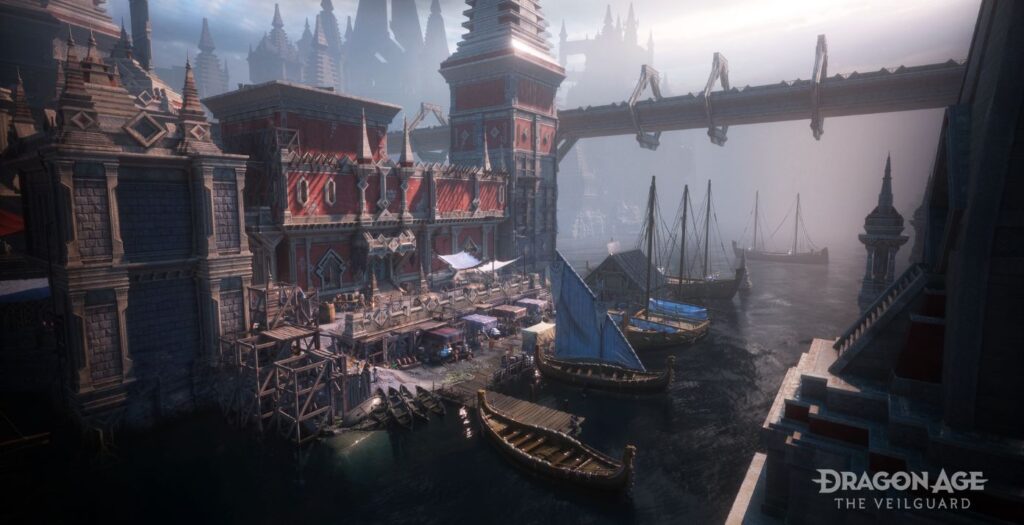
Chaput added, commenting on the world-building philosophy, “Everything serves a purpose, and that segues directly into the world-building philosophy as well, which is built on two key pillars. One of them is a focus on what contributes to the narrative and what contributes to the player’s core experience. The second one is a player agency, so everything is contributing to a narrative, making sure that you’re always learning something.”
The mention of world-building brought to mind how different the playable space is in Dragon Age: The Veilguard. Gone are the open zones like the Hinterlands from Dragon Age: Inquisition or even the Korcari Wilds in Dragon Age: Origins. This doesn’t mean that the world is less interesting, though, because with a more controlled experience comes the potential to create memorable moments. It also becomes easier to talk about these moments or settings with your friends when environments are more focused.
When I asked about the difficulty of adding detail to these smaller canvases, Rhodes countered, “At a high level, I find it’s actually just the opposite. […] This game is about characters, it’s about the world and your relationship to them and being able to narrow our focus, allowing opportunities for not just the companions but all of the characters in this game to really shine.”
Chaput agreed, adding, “One of the advantages we found early on with this kind of approach was, we can really focus on the landmarks. Now we know how you’re going to see the landmarks, how they’re being introduced to you. […] It gives us an opportunity to make things more memorable and now that we have more memorable things we can spread them out in the distance, you can see them and they’re all pulling on the player equally.”
To conclude the interview, I asked Rhodes and Chaput for a fun fact that ties into the design of the world and it resulted in an interesting bit of world design philosophy. Rhodes offered, “One of the things we tried to do when creating the different factions […] One of the things we did was give them a very specific shape, language, and color pallet. On the shape language front, we went as simple as possible, so it’s just fundamental shapes, but they increase from one to six. So, the Lords of Fortune are one. They’re a circle, one-sided. Antivan Crows, two-sided with the feather symbol. Veil Jumpers have three sides with a triangle. Shadow Dragons are four with a sideways square. Grey Wardens are five with the shield, and the Mourn Watch are six with the hexagon. So it’s like almost every single thing in their palette, from appearances and visuals and flags, everything is seeded with that shape language. So that if you find a chest in the middle of nowhere, you’ll know that, “Oh, that’s a Veil Jumper chest.”
Much like any of the heroic groups in the Dragon Age franchise, collaboration goes a long way when faced with a monumental task. With these design philosophies and the attention to detail we’ve seen so far, it’s no wonder Dragon Age: The Veilguard is as gorgeous as it is. Thanks to a variety of settings, factions, and story threads to interact with, it will be worth exploring time and again.
Dragon Age: The Veilguard releases October 31st on PlayStation 5, Xbox Series X|S, and PC.
No Title
No Description

